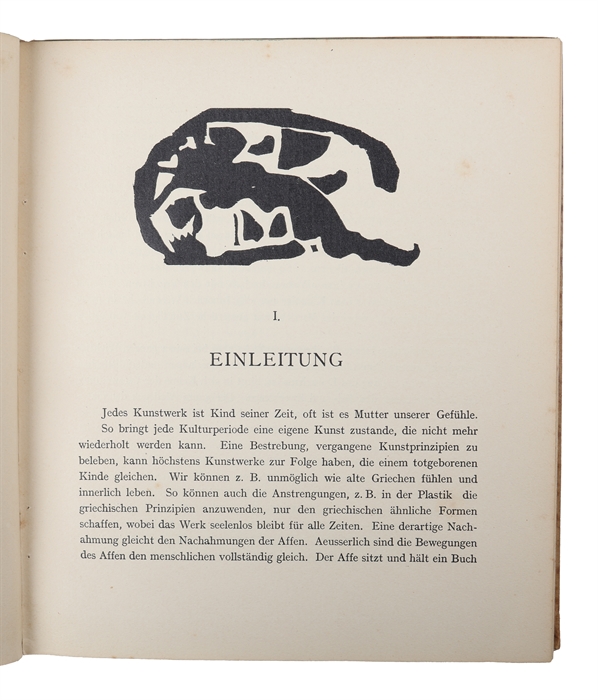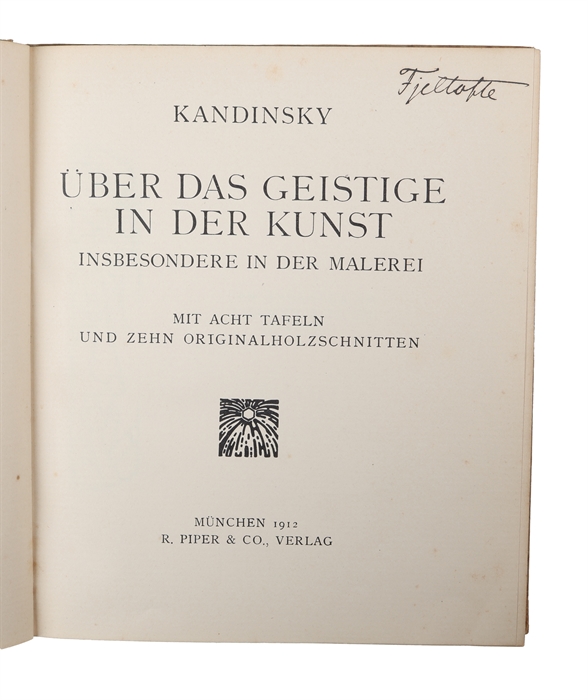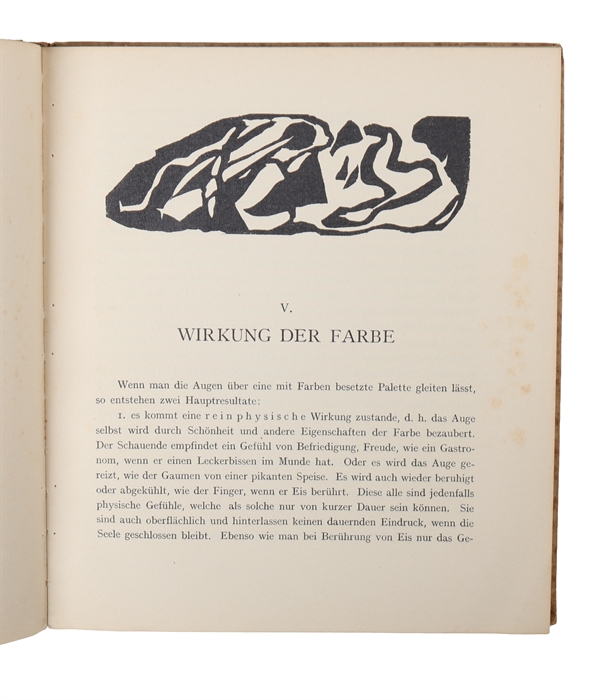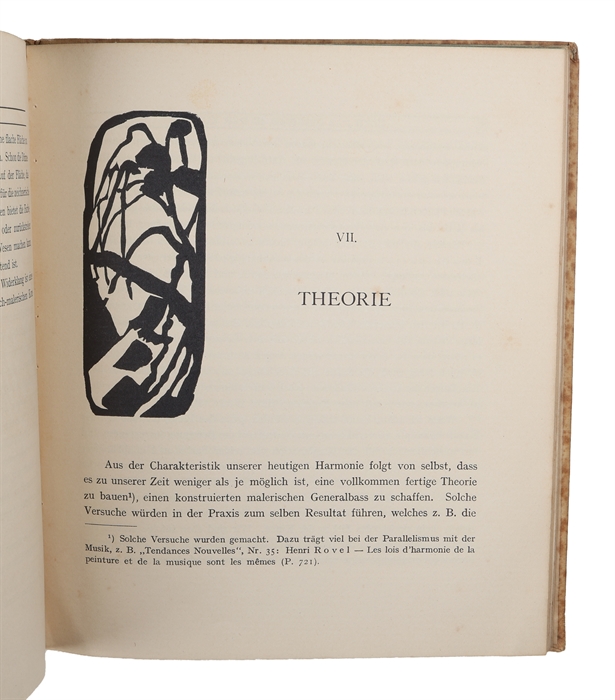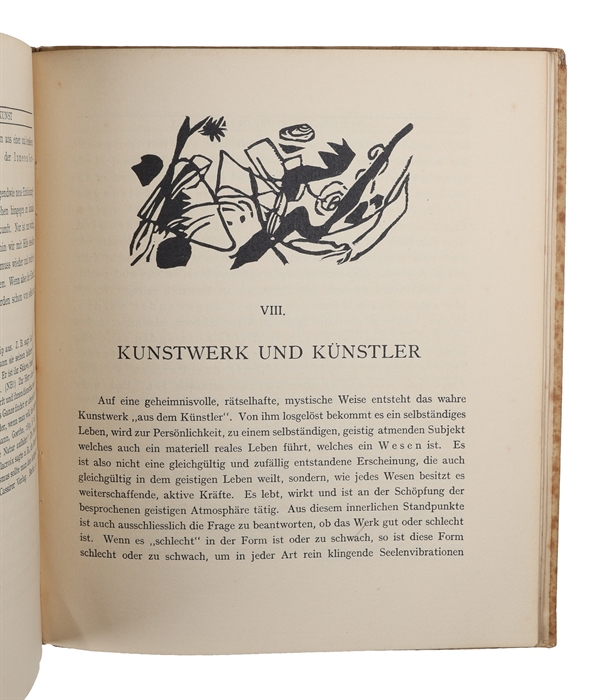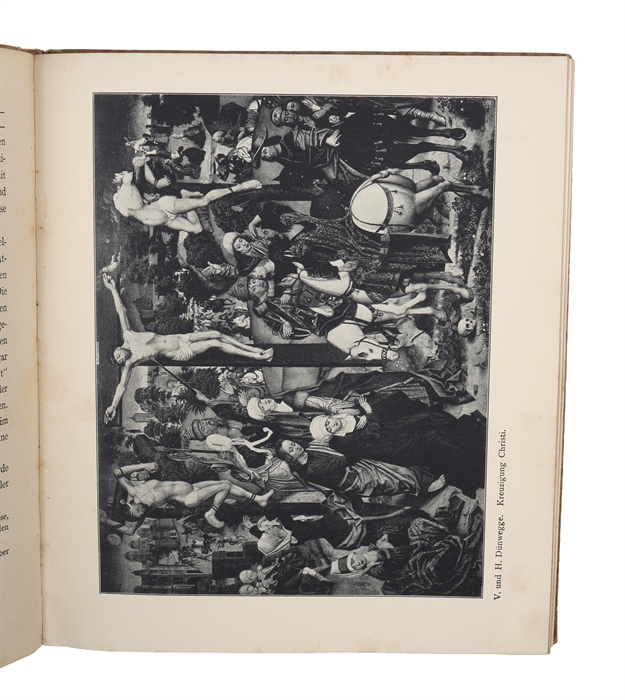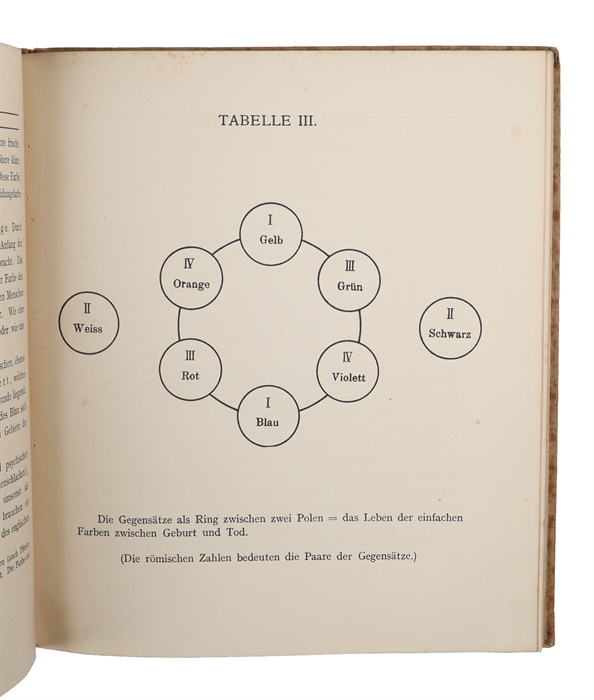"AN IMPORTANT LANDMARK IN MODERN ART HISTORY"
KANDINSKY.
Über das geistige in der Kunst. Insbesondere in der Malerei. Mit ach Tafeln und zehn Originalholzschnitten.
München, Piper & Co, 1912.
Small 4to. Original illustrated full cloth (stating Dritte Auflage - i.e. third issue). Binding brownspotted and with tear to lower capital. Internally a bit of occasional brownspotting. Owner's signature to title-page (Fjeltofte). (8), 104 pp. + 8 plates + 3 unnumbered leaves of tables (Tabelle I-III) + advertisement leaf. Illustrated with original woodcuts in the text, 10 in all.
The scarce first edition, first printing of Kandinsky’s landmark theoretical work of art, ”A seminal text in the history of modern art” (Guggenheim), curiously bound in the third issue binding. The first issue is easily distinguishable from the second and third that also appeared in 1912, as they are both expanded and have 124 pp., whereas the first has 104. The present copy has small remains of stitching towards the inner margins, so perhaps someone had this first issue printing inserted into the third issue binding, which is sturdy as opposed to the wrappers of the first issue. “In Concerning the Spiritual in Art Wassily Kandinsky, one of the most famous abstract painters of all time, urges the reader to free themselves from art's traditional bonds to material reality. In this radical theoretical work, he calls for a spiritual revolution in painting, arguing that artists, much like musicians, should be allowed to express their own inner lives in abstract, non-material terms. Investigating form and colour, spirituality and tradition, Kandinsky explores art's resonance with the soul, its purpose and nature, and its power to inspire us, to stir our emotions and to help us see beyond the limits of our world. A significant contribution to the understanding of non-objectivism in art, this book serves as an important landmark in modern art history and is necessary reading for every artist and art-lover.” (From the Penguin Classics edition). “In this remarkable book, anticipating “the spiritual turning-point” Kandinsky reflects on his understanding of progress in this direction. This is not a process that would happen automatically. It requires a lot of work and implies a great responsibility of both artist and viewer. The task of the artist is to find “the principle of the innermost necessity” that he or she can use through expressive means to achieve the goal, “vibration of the human soul.”
Using captivating analogies, Kandinsky dwells at length on the artistic means: the psychology of color, the compositional interrelation of forms, etc. However, the main goal of an artist still remains to find that very innermost necessity”, that is based on the spiritual foundations of the individual.
In his or her turn, the work of the viewer is to find within him- or herself the purity of perception, which, at this level, does not relate to the beauty of nature. The ideal imitation of nature as the summit point of artistic mastery has remained in the past. The impressions of impressionists, the emotions of expressionists, the experiments of cubists - all these stages have long been passed, and now the task of the viewer is to see the beauty of pure color and pure shape.
Kandinsky anticipates the emergence of abstract art as the purest form of influence on the human soul, and views the future optimistically, foretelling the upcoming emergences of the epoch of great spirituality.” (from Sadler’s English translation)
Order-nr.: 62248

